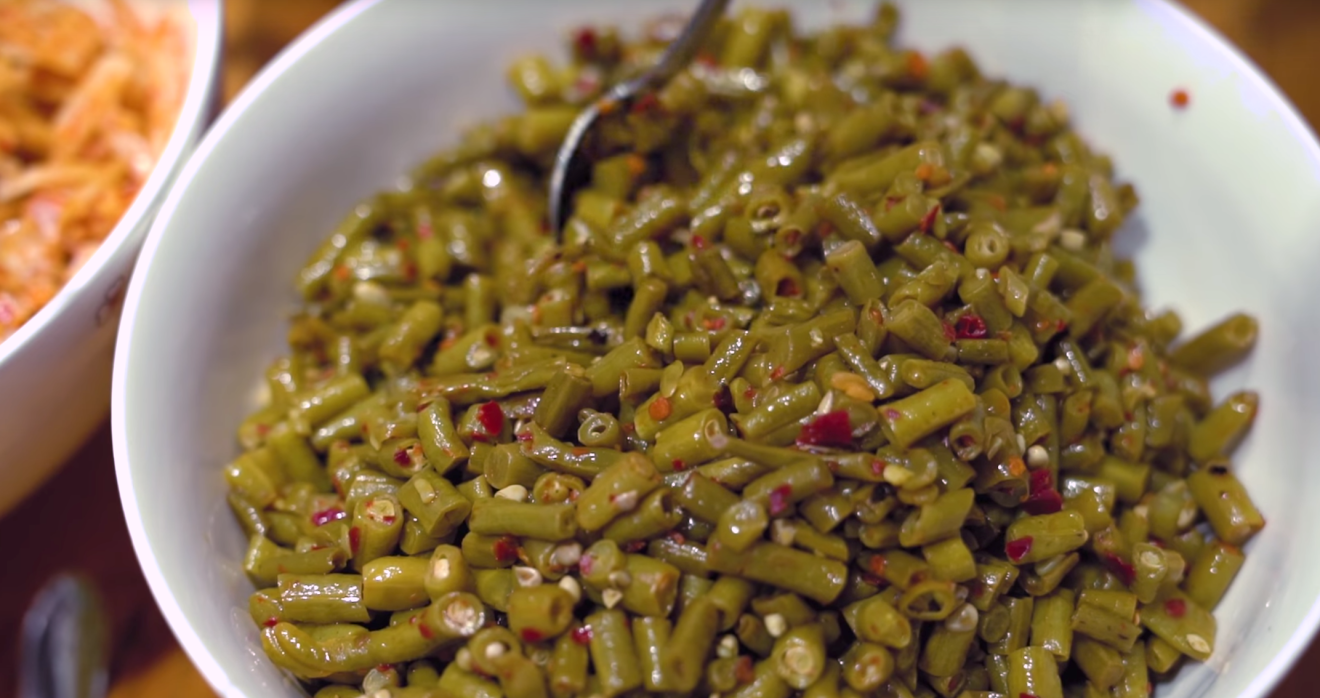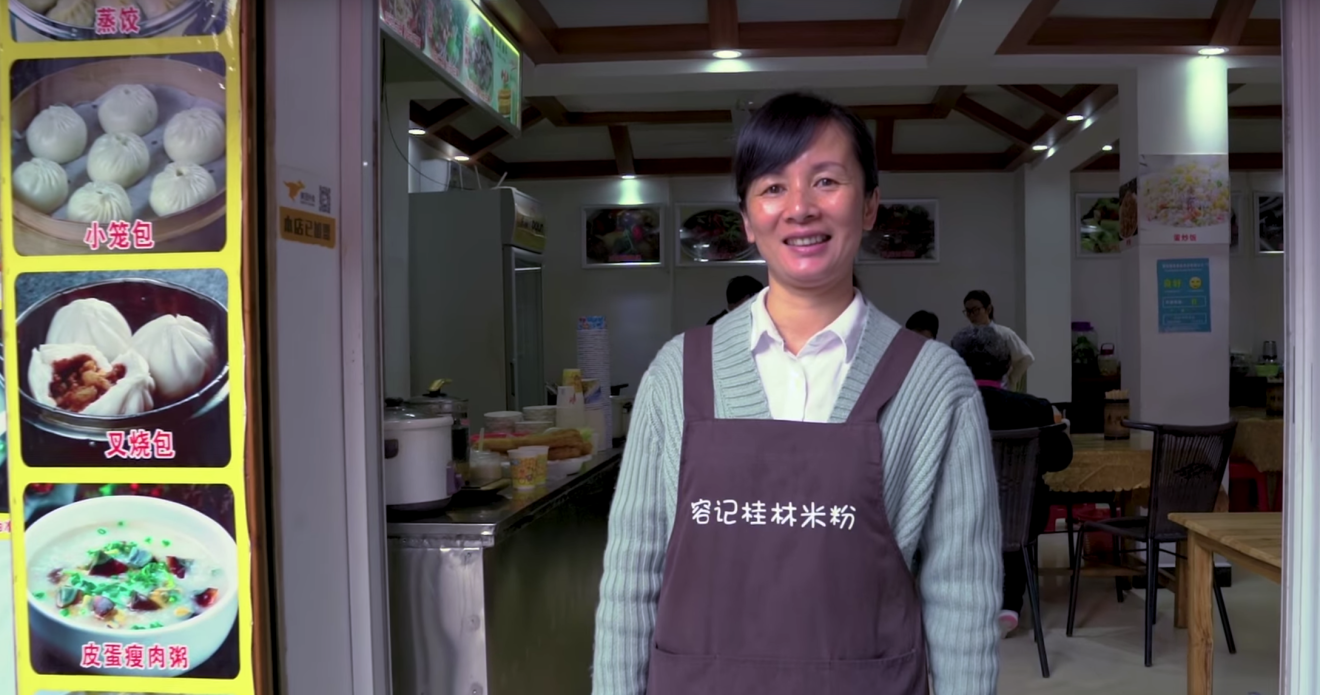Yangshuo (Goldthread) – At 5:30 am, Rong Jinhua ties her apron behind her back and bends over a charcoal-fired stove in the small kitchen, checking that her gravy base for today’s bowls of Guilin rice noodles is slow-boiled to perfection.
Rong runs a little one-room restaurant in Yangshuo, a county in the southern Chinese region of Guangxi.
Each noodle shop’s gravy recipes are closely guarded secrets. Rong’s version boasts over 20 different ingredients and spices, ratios of which she has continuously tweaked since she opened her restaurant ten years ago.
“The taste improves as the years go by,” the 43-year-old says with a wide grin.

At a counter on the other side of the tiny restaurant, Rong’s mother places a pot of homemade soymilk on a burner and stacks trays of steamed xiaolongbao (juicy pork-filled dumplings), reserved for diners who don’t yen for the region’s trademark noodles.
Their first customer arrives at 6 am. After ordering his bowl of standard mifen (long, round-shaped rice noodles) for 12 yuan ($2), he sits at a table and gets his chopsticks ready. The shop also offers flat stir-fried rice noodles.

Rong hands him a bowl adorned with thick slices of fatty fried pork and her prized gravy, then gestures toward the condiments station.
There, the customer piles his bowl with spoonfuls of chopped spring onions, cilantro, pickled beans, pickled radish and various chilies, then mixes everything together.
He heeds a big red sign on the communal tank of noodle broth instructing patrons: “For authentic Guilin rice noodles, first eat it dry and then drink the soup”.
“This is the traditional method,” Rong told Goldthread. “You taste the flavours better this way, but when you start to get full, finish up the noodles with a splash of broth.”
In China’s southwestern province of Guangxi, the fragrant bowls of soft and smooth rice noodles have been ubiquitous since they were invented over two millennia ago. They are eaten for breakfast, lunch, and dinner.
As the story goes, during the reign of a Qin Dynasty emperor in 221 BCE, soldiers from the north arrived in the south to force the region to join the empire. Since the soldiers were not accustomed to eating rice like southerners, an army general ordered for rice flour to be made into noodles.

It is unclear why the dish became known as “Guilin rice noodles,” but they have been popular for a long time, especially in Guangxi’s Guilin and Yangshou counties—areas known for dramatic karst mountain landscapesthat have inspired generations of Chinese painters.
Guangxi is among China’s poorest provinces, lacking the natural resources and manufacturing infrastructure to support large industries.

Rong’s restaurant is on a relatively quiet street. When Rong was younger, many of her friends and family members ventured elsewhere in the country to look for work. But she didn’t want to go and make her kids part of China’s estimated 60 million “left-behind children”—kids left to be raised by other family members, while their parents try to make a living in bigger cities.
In the past years, though, she’s benefited from the tourism boom that has transformed Yangshuo from sleepy hamlet into an iconic destination for domestic tourists and international backpackers.
“I’ve always enjoyed cooking, and with this kind of business I can watch my son and daughter as they do their homework and we can eat meals together,” Rong said.
At the end of the day, after the dinner rush where customers order plates of beer battered local fish along with their noodles, and after condiments for the next day are painstakingly prepared, the proprietor is still brimming with energy.
She leads us around the corner and down the street for a tour of “West Street,” a 1,400-year-old pedestrian path that’s become a raucous night market.
Rong laughs at a “12-D” virtual reality simulator ride that has staff tickling tourists with feather dusters and spraying them with water.
“Isn’t this great?” she says. “Yangshuo is developing all the time and locals can work where they live.”
Photos by Timmy Shen
Video voiceover by: Dolly Li; Produced and written by: Dolly Li and Timmy Shen; Shot by: Timmy Shen; Interview conducted by: Joanna Chiu; Edited and mastered by: Victor Peña
